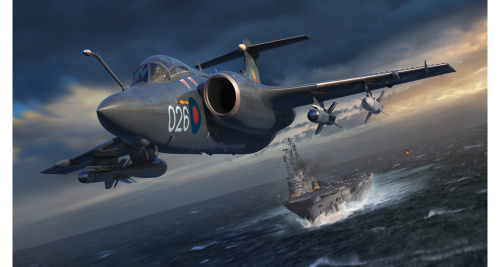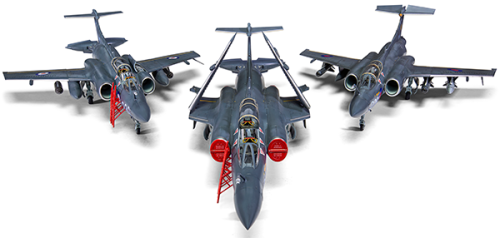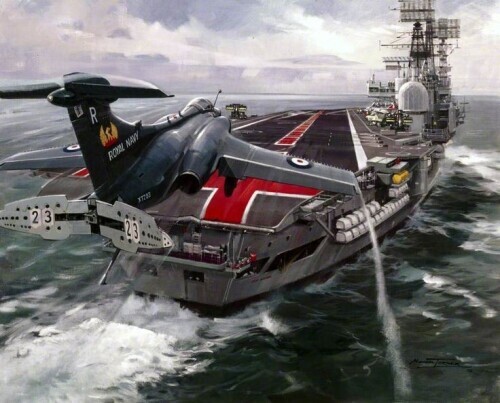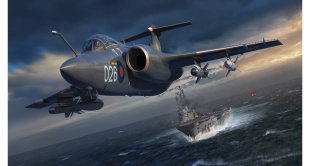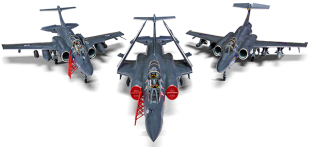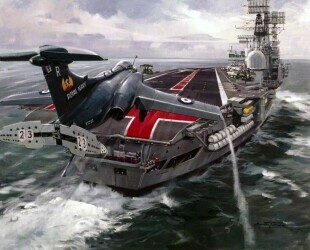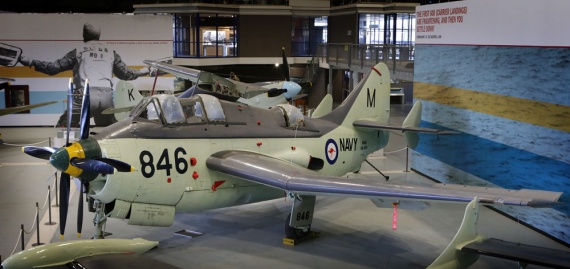Airfix 1/ 48 Blackburn Buccaneer S.2 Aircraft
Airfix Buccaneer 1/48 Model Aircraft
- Item Type: Aircraft model kits
- Scale: 1/48
- Code: A12012
- Material: Plastic
- Colour: Unpainted
- Theme: Aviation/ Naval Jets
- Aircraft Model: Blackburn Buccaneer S.2
- Batteries Required: No
- Model Dimensions: 40.2 x 10.3 x 28 cm
- Includes: Plastic sprue, Decal sheet, Instructions
- Age: 8+
This airfix blackburn buccaneer model kit is a highly detailed model of the famous naval jet of the British Royal Navy.
It has a wingspan of 80 mm, and comes in a new mould for Blackburn buccaneer collectors.
The airfix buccaneer 1 48 has a detailed cockpit, with crew access ladders, intake covers, opening air brakes and an engine panel.
It is an unassembled and unpainted model that can be completed with model building painting instructions provided.
Blackburn Buccaneer
The Blackburn Buccaneer was one of the most capable aircraft of its kind that was designed to excel at low altitudes. A great success for the British Aviation Industry, this naval jet is the heaviest aircraft controlled by the British Royal Navy. As their iconic subsonic strike jet, the Buccaneers design includes foldable wings, rear speed brake and nose – ideal for effective carrier stowage, without impacting the aerodynamic integrity of the jet.
The Blackburn buccaneer aircraft s2 is a magnificent naval strike aircraft which originated from Britain's response to a massive naval expansion programme by the Soviet Navy in the 1950s and the introduction of their Sverdlov Class Cruiser Jets.
This naval jet was designed to successfully neutralise this new naval threat from the Soviets.
The buccaneer s2 was limited to operating from a limited space aboard a british aircraft carrier ship.
In order to allow its effective performance at sea, the jet design included the ability to fold its wings, with a nose (radar housing) that could fold back and rear speed brake that could split open, for better carrier stowage, while simultaneously maintaining the aerodynamics of the aircraft.
Entering Royal Navy service in July 1962, the plane did not have two seat trainer models, so even though the pilot would have had the chance to be a back seat spectator of several flights, his first flight as pilot would be a solo flight on the buccaneer. However, the Blackburn designers included many hi-tech automated features in the Buccaneer's spacious cockpit, the core focus of which was to ease the pilot’s responsibilities.
There is something aviation enthusiasts find exciting about the operation of aircraft at sea and the courageous aviators who flew planes from the decks of aircraft carriers.
The risky nature of these operations demanded that naval aircraft had to be sturdy, in addition to being capable of carrying out the mission for which it was required.
The introduction of the S.2 variant of the aircraft in late 1965 was a major upgrade of the Buccaneer's capabilities, but focused on utilising a new power plant, the famous Rolls Royce Spey turbofan.
Possessing greater thrust and increased range, the Buccaneer S.2 was an even more capable naval strike aircraft and one which must have been a force to be reckoned with for any Soviet naval commander. With its increased power, the S.2 was now able to land back on its home aircraft carrier ship with one engine shut down if required, but still having enough thrust to safely go around again, in case the aircraft failed to lock in the arrestor hook the first time.
The Blackburn Buccaneers of No.800 Naval Air Squadron were famously used in the destruction of the stricken oil tanker Torrey Canyon, off Land's End in March 1967, as the government attempted to prevent an environmental catastrophe by breaking open the vessel and burning its flammable cargo.
Operating from RAF Brawdy, eight Buccaneers from No.800 NAS dropped 42,000 lbs of high explosive bombs on the tanker, with an impressive 75% success rate.




